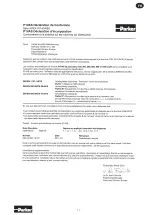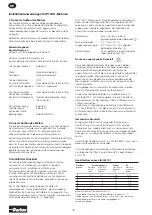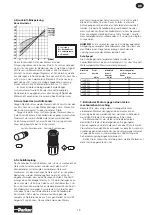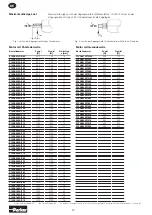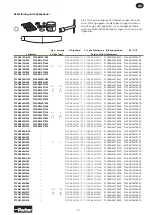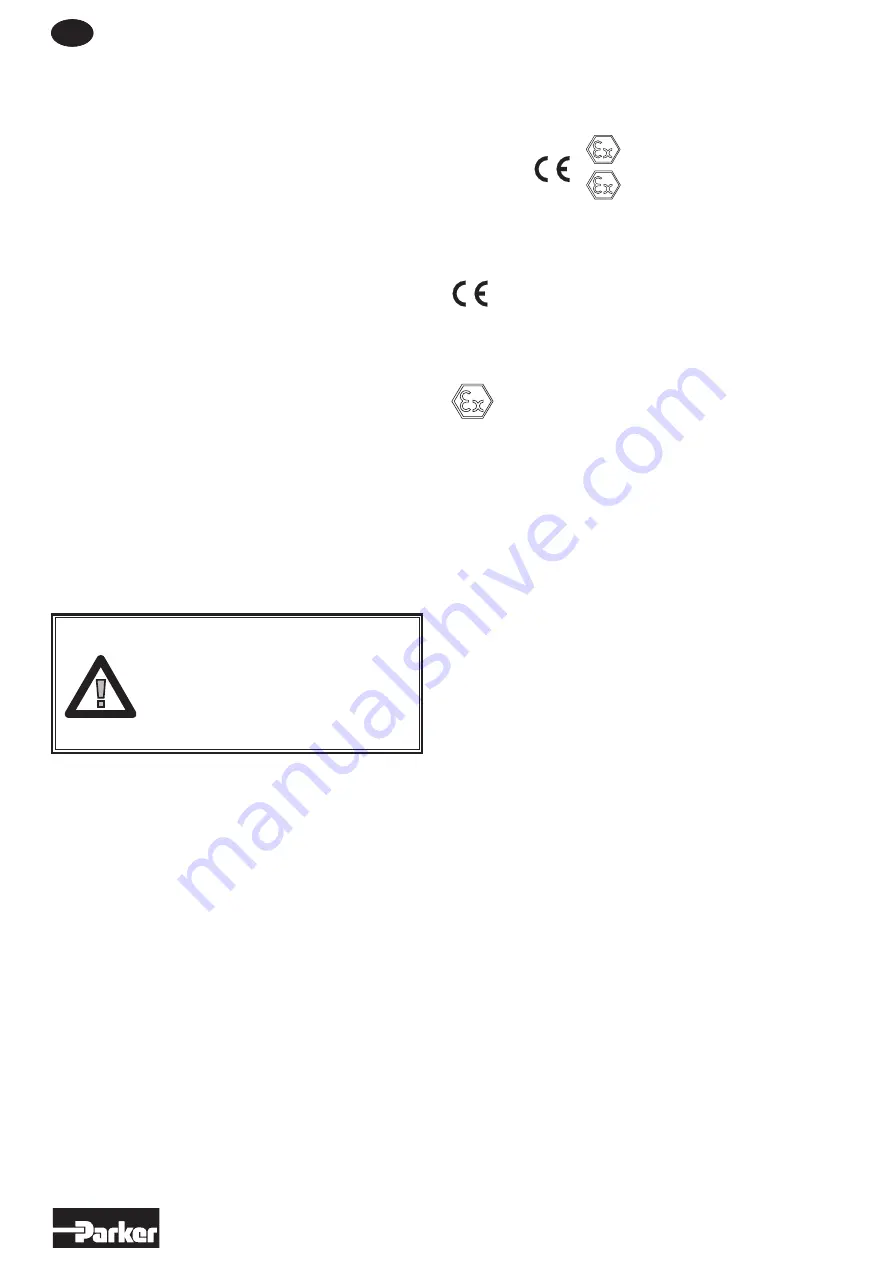
6
UK
The following normal service intervals should be applied to in
order to guarantee problem-free operation in air motors working
continuously at load speeds.
Intermittent lubrication-free operation of motors with
standard vanes, option 0
Duty cycle :
70%
Max. duration of intermittent use :
15 minutes
Filtering 40 µm :
750 hours of operation*
Filtering 5 µm :
1,000 hours of operation*
Continuous lubricated operation of motors with standard
vanes, option 0
Duty cycle :
Continuous
Quantity of oil :
1 drop per m3 of air
Filtering 40 µm :
1,000 hours of operation*
Filtering 5 µm :
2,000 hours of operation*
Note! After 1000 hours of operation, the grease in the
planetary gearbox must be changed.
Continuous lubrication-free operation of motors equipped
with vanes, option C
Duty cycle :
Continuous
Filtering 40 µm :
750 hours of operation*
Filtering 5 µm :
1,000 hours of operation*
* The specified hours of operation apply when
the motor is running at the speed corresponding
to maximum power (load speed).
This is approximately half free speed.If the motor
operates at higher speeds, the service interval
is shorter.If the motor operates at lower speeds,
the service interval is longer.
Communauté Européenne = European Community
This symbol documents the declaration of the
manufacturer that the required guidelines – as
stated in the Declaration of Conformity – are observed
and its provisions are followed.
The Parker air motor is suited for standard use in
explosion Ex-areas
Design group II – Use in endangered areas except
in underground mining operations and their over-
ground facilities
Design group 2 – These machines provide a high
level of safety and can be used in areas where there
is occasionally an explosive atmosphere of gases,
vapours, mists (2G) or dust / air mixtures (2D). This
corresponds to zones 1 resp. 21 and also includes
zones 2 and 22.
Ignition Protection: “structural protection” for non-
electrical devices for use in explosive atmospheres
according to ISO 80079-36, -37
Explosion group IIC (gas, subgroup C, it also fulfills
the requirements of the explosion groups IIB and
IIA)
Explosion group IIIC (conductive combustible dust,
specific electrical resistance ≤ 10³ Ω , it also fulfills the
requirements of the explosion groups IIIB and IIIA.
Temperature class for gases and liquids.
The temperature class shows the max.
permissible temperature of the surface
corresponding ISO 80079-36:
T1 = 450°C, T2 = 300°C, T3 = 200°C, T4 = 135°C,
T5 = 100°C, T6 = 85°C
Max. permitted temperature of the surface of the
motor in an area, where explosive dusts are existent
Equipment protection level
Gb (high protection level) gases / vapours
Db (high protection level) dusts
“Observe special requirements”: In the operating
instruction booklet marked with the symbol
II
2G/2D
EX h
IIC
IIIC
T5
95°C
Gb
Db
X
II 2G Ex h IIC T5 Gb X
II 2D Ex h IIIC T95°C Db X
Example:

















